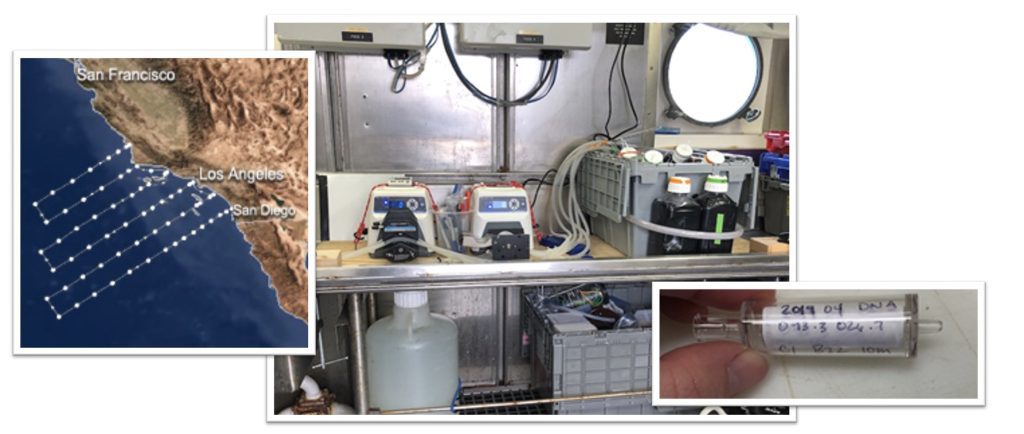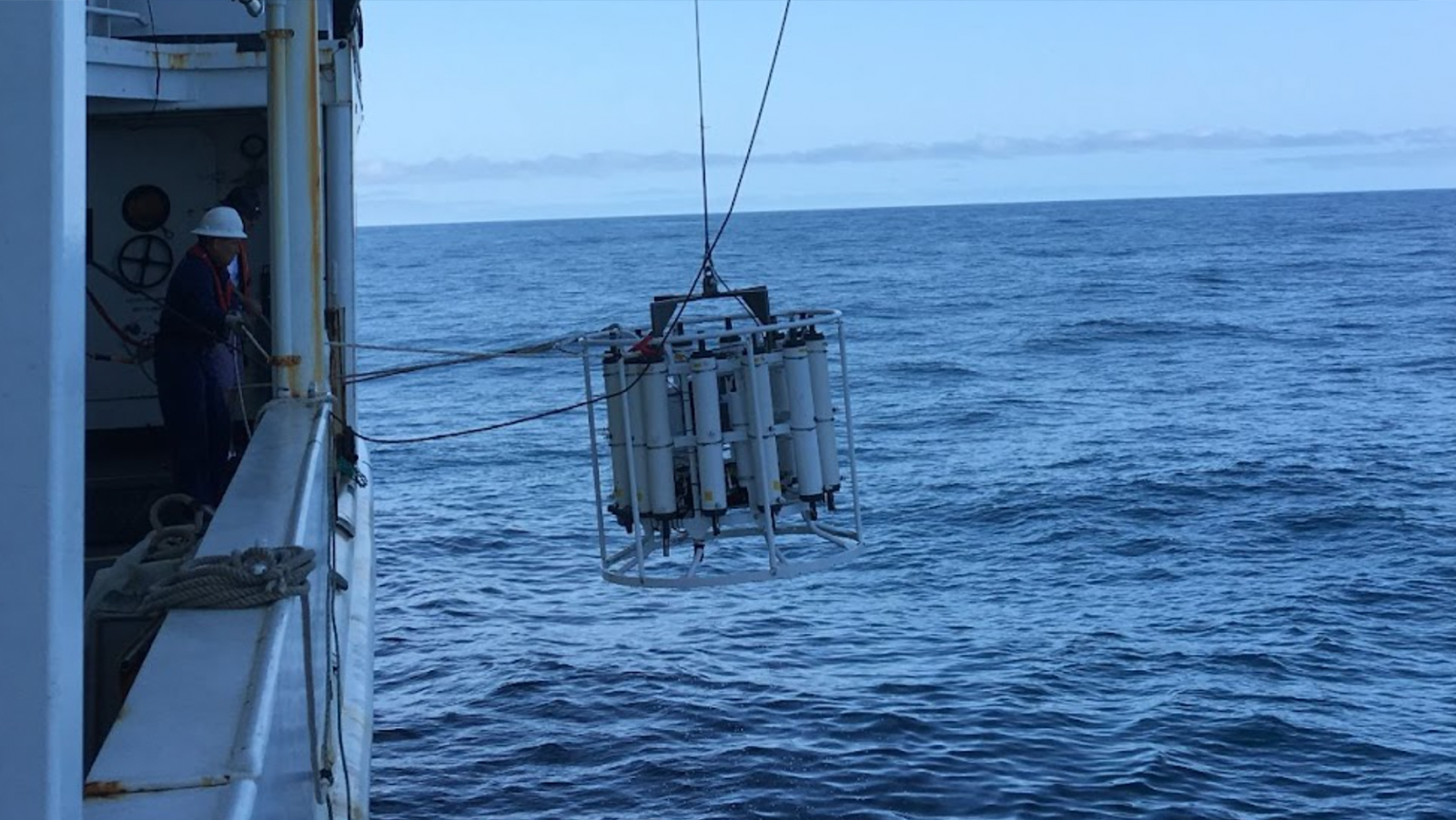Although too tiny to be seen by the naked eye, microscopic organisms have a big impact on our planet – supporting fisheries, degrading pollutants, and helping regulate the earth’s climate. A new study published in Nature Communications employed cutting edge research techniques (collectively referred to as ‘omics) to reveal how the ocean’s tiniest creatures respond to changes in the marine environment. This work addressed a number of objectives in the NOAA ‘Omics Strategic Plan, which calls for the characterization of food webs that sustain fisheries and vulnerable species.
Researchers from Scripps Institute of Oceanography, J. Craig Venter Institute, and NOAA’s Atlantic Oceanographic & Meteorological Laboratory revealed how microscopic bacteria, plants, and animals – the marine microbiome – responded to changes in nutrient supply. This work is part of the NOAA-CalCOFI Ocean Genomics (NCOG) project, which began in 2014 with seed money jointly provided by NOAA’s Office of Ocean & Atmospheric Research and National Marine Fisheries Service.
The work leveraged quarterly surveys of the California Cooperative Oceanic Fisheries Investigations (CalCOFI) program, which has been collecting data for over 70 years in the highly productive and economically valuable California Current Regional Ecosystem.
“It’s interesting that 70 years ago, CalCOFI couldn’t have even imagined that you could sample two liters of seawater and get comprehensive data on the marine microbial community,” said Chase James, a graduate student at Scripps Oceanography and JCVI researcher.

Complicated patterns in space and time were observed for the various members of the microbiome.
Kelly Goodwin of NOAA’s Atlantic Oceanographic and Meteorological Laboratory said, “This data set is complex. Nearly 1000 samples were collected over seven years, across multiple sites, and generated over 50,000 distinct genetic sequences belonging to prokaryotic and microeukaryotic organisms. Chase [James, lead author] used an interesting machine learning technique to reduce the complexity of the data set, called self-organizing maps or SOMs.”
This approach, along with identifying the microbes in detail by using ‘omics, revealed that the diversity and structure of the microbial community was best predicted by nutricline depth rather than temperature. Temperature is a globally important driver of microbial community structure according to several well-known studies conducted in the open ocean. Perhaps the different pattern observed here is because this study focused on the near-shore in a zone characterized by periodic upwelling.
“A major future goal of this study is to achieve the initial goals that CalCOFI set out to accomplish, which is to understand the processes that drive the success and failure of our regional fisheries. This cutting-edge research may be used to answer 70-year-old questions,” said James.
James, C.C., Barton, A.D., Allen, L.Z., Lampe, R.H., Rabines, A., Schulberg, A., Zheng, H., Goericke, R., GOODWIN K.D., Allen, A.E. Influence of nutrient supply on plankton microbiome biodiversity and distribution in a coastal upwelling region. Nature Communications 13, 2448 (2022). https://doi.org/10.1038/s41467-022-30139-4. https://www.nature.com/articles/s41467-022-30139-4
Protocols for the study are available at dx.doi.org/10.17504/protocols.io.bmubk6sn.
